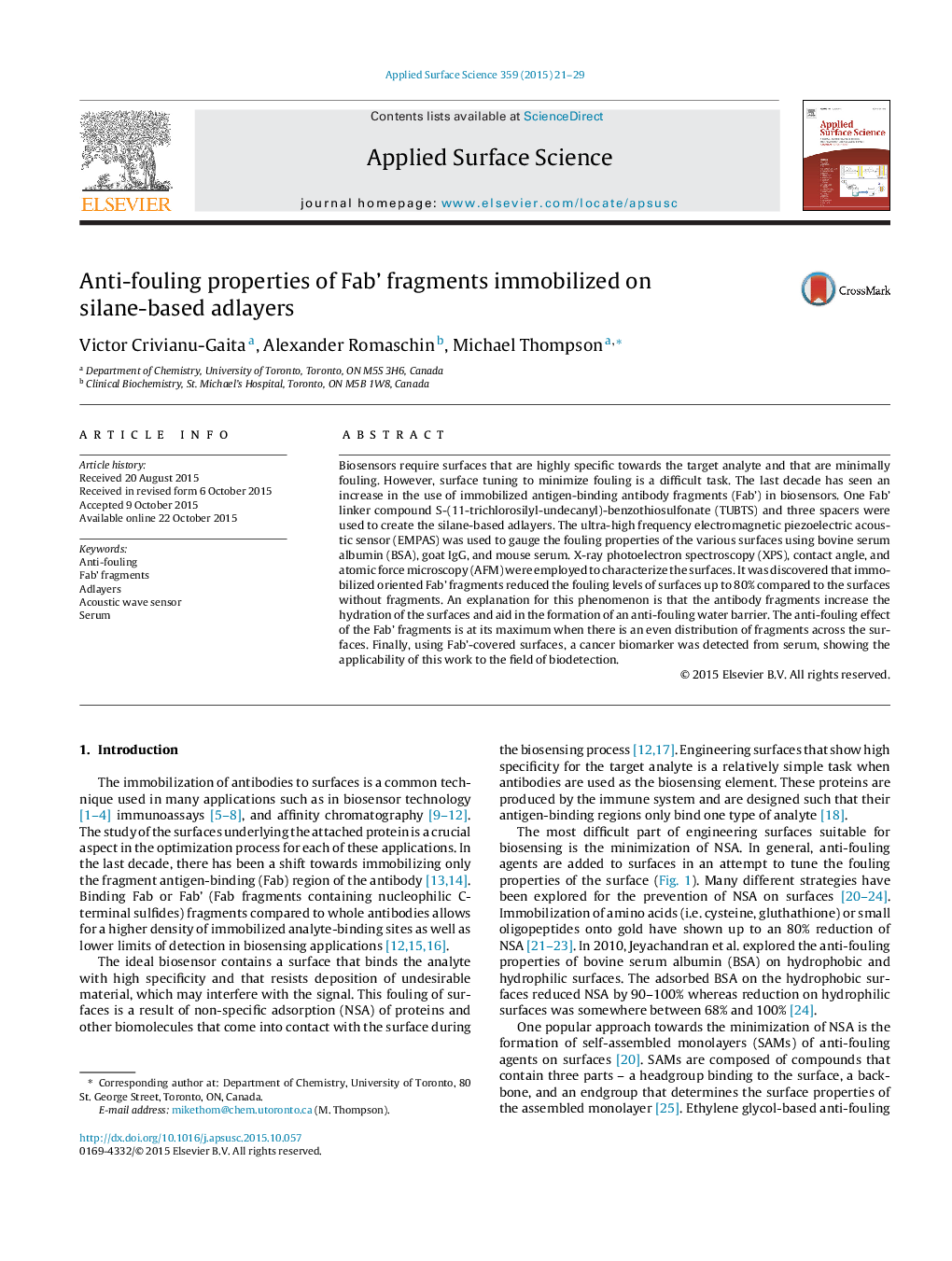| Article ID | Journal | Published Year | Pages | File Type |
|---|---|---|---|---|
| 5357454 | Applied Surface Science | 2015 | 9 Pages |
Abstract
Biosensors require surfaces that are highly specific towards the target analyte and that are minimally fouling. However, surface tuning to minimize fouling is a difficult task. The last decade has seen an increase in the use of immobilized antigen-binding antibody fragments (Fab') in biosensors. One Fab' linker compound S-(11-trichlorosilyl-undecanyl)-benzothiosulfonate (TUBTS) and three spacers were used to create the silane-based adlayers. The ultra-high frequency electromagnetic piezoelectric acoustic sensor (EMPAS) was used to gauge the fouling properties of the various surfaces using bovine serum albumin (BSA), goat IgG, and mouse serum. X-ray photoelectron spectroscopy (XPS), contact angle, and atomic force microscopy (AFM) were employed to characterize the surfaces. It was discovered that immobilized oriented Fab' fragments reduced the fouling levels of surfaces up to 80% compared to the surfaces without fragments. An explanation for this phenomenon is that the antibody fragments increase the hydration of the surfaces and aid in the formation of an anti-fouling water barrier. The anti-fouling effect of the Fab' fragments is at its maximum when there is an even distribution of fragments across the surfaces. Finally, using Fab'-covered surfaces, a cancer biomarker was detected from serum, showing the applicability of this work to the field of biodetection.
Related Topics
Physical Sciences and Engineering
Chemistry
Physical and Theoretical Chemistry
Authors
Victor Crivianu-Gaita, Alexander Romaschin, Michael Thompson,
